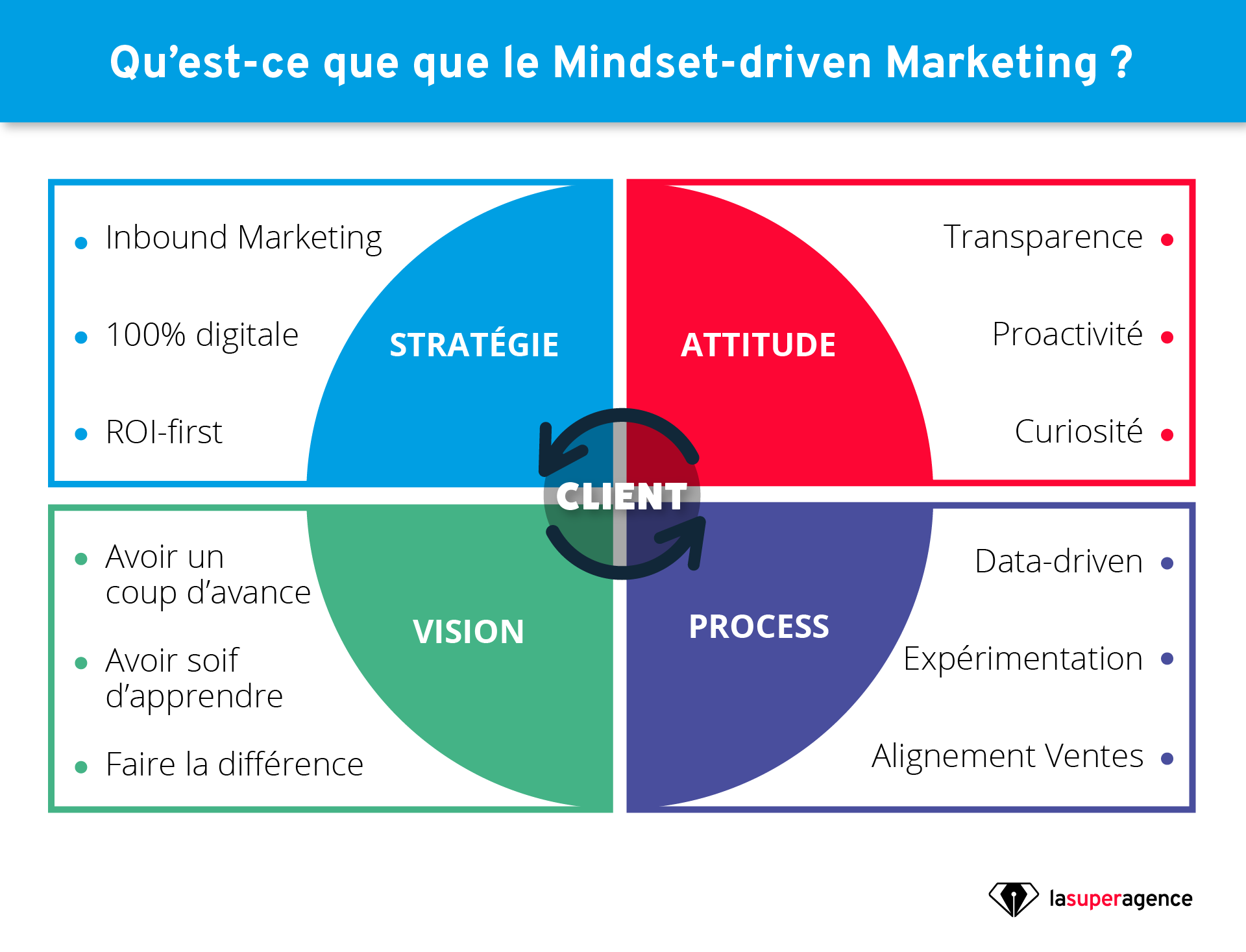The Mindset of a customer can be defined as the sum of his desires, his concerns, and the questions he asks himself as he embarks on his buying journey.
These concerns are very important to them, and if you can't address them they will move on.
That's one thing all digital-marketing efforts have in common: the customer's reaction is immediate. You have only a few thousandths of a second to attract them (or lose them !).
So there should be no barriers between your customers' very specific information search, and your information.
But mind you, it's not about you and your products and services. It's only about your customers' wants, concerns and questions.

Seek to understand your customers' aspirations
Your customers want to know: how you can meet their desires, how you can calm their concerns, and whether you can respond quickly to their satisfaction.
That's what they want, and we know it very well when we are consumers ourselves.
Yet, when we're a salesperson we almost always forget this. Thus, when a customer consults a website, these questions are hardly answered. Moreover, the sites of competing companies all look the same.
In fact, they all make the same claims, show the same type of information, and market like " we're great, here's why and here's the proof (...) ".
How did we get here ?
Because it's easier to benchmark the competition, and replicate what they're doing rather than interviewing real customers and finding out what they actually want to find on our website.
Yet they just want you to address their very specific wants, concerns, and questions on your site and in your advertising campaigns.
People today are in a hurry; they may visit a hundred or more pages in a day.
If they see a response in one of your messages, or stumble across your websites, they will continue their buying process. If they don't click through to your site, it's already too late for you.
They don't want to have to wade through a bunch of"corporate blahs" to find what they're looking for.
When B2B buyers are asked where they click first when they visit service-oriented company sites, they always say " I go to the About section, and look at the management team ".
The heatmaps confirm his claims. Indeed, the About section is an element that is always in red, and therefore often visited.
Why do they look at this section? They are looking to see who runs the company, and what its values are. From the images on the site, they want to see the atmosphere within the company, and its professionalism. In other words, customers are looking to answer the question " can I trust this company to take care of me?
So, if you are a B2B company, you need to provide answers up front.
- Why ask customers to go to the "About" section to look for his information?
- Why not have a short video of the company founder directly on your homepage?
- Why not say what you care about on your homepage?
- Why not show your smiling employees providing solutions to your customers?
Don't forget that Mindset-driven Marketing puts your customer at the center of your strategy, attitude, process and vision.
 What is mindset-driven marketing?
What is mindset-driven marketing?
This disrupts the usual structure of a website, and fortunately ! Indeed, when you put the client's Mindset in the foreground, you change the priority and emphasis of their messages.
As a successful business owner or manager, treating your employees well is part of your personality. This makes the idea of highlighting the fact that "happy people work here" seem obvious or superfluous.
However, this aspect is important in the customer's mind. Indeed, happy people treat their customers with more kindness.
A Good leadership and a pleasant service experience are generally what business-to-business customers are looking for from service companies, but you shouldn't generalize. You can't do what worked for one company and try to apply it to your case.
The best answer is to interview your customers, and seek to understand their specific desires, concerns and questions when purchasing your product or service.
Wants and concerns are intimately related
Desires and the concerns, which make up the mindset, are often closely related.
For every concern, there is a corresponding desire.
For example, let's say one wants to hire a tree trimming company.
Then one would look for someone reliable who cuts branches for a reasonable price. These are the desires.
The concerns then are that the person chosen will not keep his promises (he cannot be counted on), that the work he does will damage other parts of the garden or the trees he prunes (he does not do a good job ), or that he will not meet the costs agreed upon in the estimate.
If you sell food, your buyers want to know what the product is made of and how it was made.
They want to be able to be sure that health regulations are being met, and want to be sure that employees and animals (if it's an animal product) are being treated properly.
Nowadays, consumers are sensitive to the composition and design of a product. However, these concepts are rarely, if ever, discussed in food marketing.
If you sell computer software, your customers will have very specific concerns. Still, you can be sure that their first concern is this: they loved the demo, but are disappointed with the final version.
And yes, we ourselves as software users, how many times have we had this experience?
So, from this angle, your customers' overriding desire and concern is: "I want to be able to trust you with this company."
How to address your customers' concerns and desires
When imagining a website or advertising campaign focused on the customer's mindset, you need to ask yourself the right questions :
- What is their greatest desire?
- What is their greatest concern?
- What questions do they have?
You need to know exactly what their wants and concerns are so you can make an offer that will get their attention and draw them in immediately.
If you try to guess their wants and concerns, you're going to get it wrong. So the easiest way is to ask your customers directly.
So, after they make a purchase from your business, ask them what they were looking for and what their wants and concerns were.
Once you understand what they're looking for, you're going to want to know how to get them answers, as quickly as possible, in all of your marketing content. You'll put their mindset ahead of your own.
Until you understand their Mindset, worry little about your "personas" and your "channels." Indeed, your digital marketing strategy must start with understanding the mindset of your customers, or nothing you do will work.
The success of a website and marketing campaigns comes through understanding the aspirations of its customers.
To best address their desires and concerns, you must go to them, and place their mindsets at the heart of your marketing strategy.
That's what Mindset-driven Marketing is all about!

.png)








